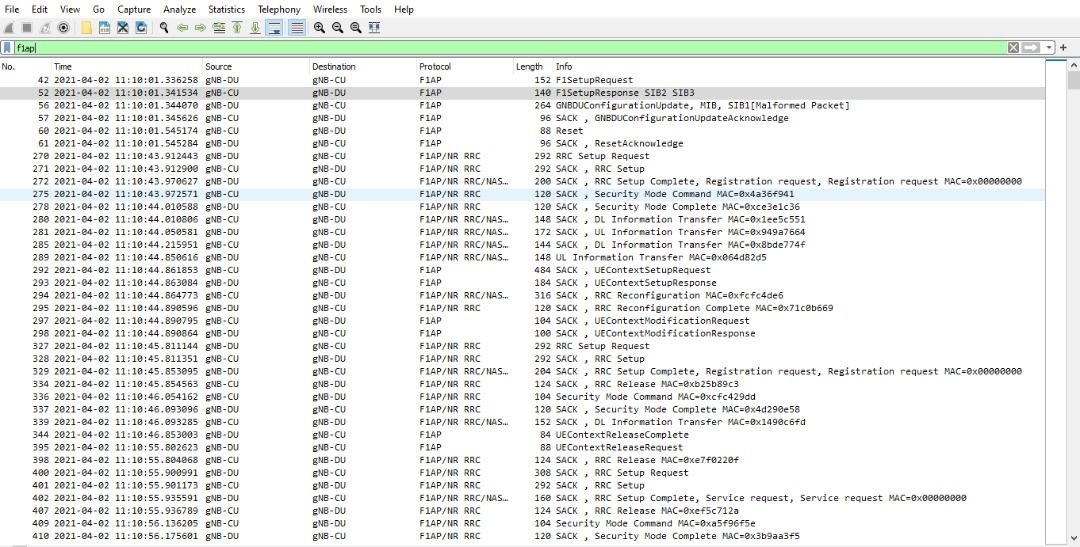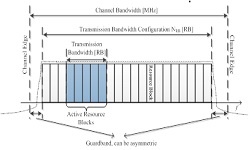5G SA Registration | 5G Call Flow
5G Stand Alone Registration
A 5G Stand Alone also know as Option 2, architecture includes 5G UE, gNB and 5G Core Network. In this post we will discuss about 5G SA Registration Call Flow for OTA messages (b/w UE and gNB) and NGAP messages (b/w gNB and 5GC AMF ). In 5G SA mode term Registration is equal to Attach in 4G LTE.
5G SA Call Flow
At high level, 5G SA Registration call flow includes following Steps and shown in following figure:
- Achieving DL/UL sync via SSB decode and RACH Procedure
- SRB0 establishment with RRC Connection Request
- Contention Resolution and SRB1 establishment with RRC setup
- Registration Request
- NAS Procedures like UE Identity transfer, Authentication and Security
- AS UE Capability transfer and AS security
- SRB2 and DRB establishment
- Registration Complete and PDU session Establishment

- Cell Search and Downlink Synchronization: Cell search is the procedure by which a UE acquires time and frequency synchronization with a cell, decode the Cell ID and PBCH (MIB) information. Detailed procedure can be read in this post.
- Uplink Synchronization:
- UE can achieve UL synchronization can by RACH Procedure. All RACH access related parameters UE can retrieve from System Information#1. For RACH procedure, UE select a random preamble (msg#1), this preamble is referenced with the RAP ID. UE also starts a timing T300 to await the RRC Setup message from the gNB.
- gNB detect the RACH Msg#1 and send a DCI Format 1_0 with CRC scrambled by a the RA-RNTI corresponding to the RACH transmission. This DCI contains Frequency and Time resource assignment, and MCS for Msg#2 RAR sent on PDSCH.
- UE tries to DCI Format 1_0 with CRC scrambled by the corresponding RA-RNTI and MAC transport block in a corresponding PDSCH having RAR Msg#2 information including timing advance, uplink grant and the Temporary C-RNTI assignment.
- RRC Connection Request: RRC Connection request is considered as Msg#3 and it includes ue-Identity, establishment Cause. The ue-identity can be a Random number between 0 and 2^39-1 and will be used to contention resolution by UE while decoding Msg#4 RRC connection setup. RRC Connection Request is sent on the UL grant provides in Msg#2 from the gNB and over SRB0 on UL common control Channel(UL_CCCH).
- RRC setup: The RRC Setup message is sent to setup SRB1, contention resolution and the master cell configuration. The UE stops the timer T300 as it has received the RRC Setup message. It carries following information elements.
-
- radioBearerConfig {srb-ToAddModList},
- masterCellGroup { cellGroupId, rlc-BearerToAddModList, mac-CellGroupConfig, physicalCellGroupConfig}
-
- RRC setup Complete + Registration Request: The UE sends the RRC Setup Complete message with a “Registration Request” in the dedicatedNAS-Message. It also carries the information about selectedPLMN-Identity, registeredAMF, snssai-list. Registration request also carries UE network capability information. The gNB selects the Access and Mobility Function (AMF) for this session and allocate RAN UE NGAP ID to the UE. The AMF will use this id to address the UE context on the gNB.
- Initial UE Message: The gNB sends the Initial UE Message to the selected AMF. The message carries the “Registration Request” message received from the UE in the RRC Setup Complete message. The “RAN UE NGAP ID” and the “RRC Establishment Cause” are also included in the message.
- UE NAS Identity Transfer: UE Identity transfer is a conditional. If there is a change in last AMF selected by gNB and SUCI is not provided by the UE nor retrieved from the old AMF then Identity Request procedure is initiated by AMF sending an Identity Request message to the UE requesting the SUCI. The UE responds with Identity Response including the SUCI. The UE derives the SUCI by using the provisioned public key of the HPLMN.
- Authentication and NAS Security: The Core network performs Authentication procedure for the UE is legitimate and legally authorized to get service from the network. The detailed authentication procedure can be read from this post. The AMF signals the selected NAS security algorithm to the UE and requests the IMEISV from the UE as part of NAS security mode command. UE respond with completion of the NAS security procedure and contains the IMEISV in security mode complete.
- INITIAL CONTEXT SETUP REQUEST: The AMF allocates an “AMF UE NGAP ID“. The gNB will use this id to address the UE context on the AMF. AMF sends an INITIAL CONTEXT SETUP REQUEST message to gNB to start the initial context establishment process. The message typically contains the Registration Accept NAS message. The message carries one or more PDU Session setup requests. The message also carries the “AMF UE NGAP ID”, “UE Aggregate Maximum Bit Rate“, UE security capabilities and security key.
- AS UE Capability Transfer and AS Security: gNB can enquire the UE capability with UE capability enquiry and Information. After receiving from UE capability gNB update these capability to AMF. The gNB sends a Security Mode Command message to the UE to notify the UE to start the integrity protection and encryption process. After that, downstream encryption is started. The UE derives the key according to the integrity protection and encryption algorithm indicated by the Security Mode Command message, and then replies the Security Mode Complete message to the gNB. After that, the upstream encryption is started.
- SRB2 and DRB establishment: The gNB issues an RRC Reconfiguration message to the UE to establish SRB2 and DRB. After the After SRB2 and DRB are successfully established, the UE replies to the gNB with an RRC Reconfiguration Complete message. The gNB signals the successful setup DRB with INITIAL CONTEXT SETUP RESPONSE message to the AMF
- Registration Complete and PDU session Establishment: UE send Registration Complete and PDU session establishment request to AMF. PDU session establishment is similar to PDN Connectivity Request message in LTE. AMF sends a PDU SESSION RESOURCE SETUP REQUEST message to gNB carrying the list of PDU sessions that need to be established, the list of QoS Flows for each PDU session, and the quality attributes of each QoSFlow. The gNB maps the QoS Flow to the QoS Flow according to the quality attributes of the QoS Flow. gNB send NAS PDU session establishment accept.
F1AP Signaling for UE Registration

NGAP Signaling for UE Registration

Reference
- 3GPP TS 23.502 – 5G Procedures for the 5G System Release 15
- eventhelix Standalone Access Registration pdf
Related Posts
- 5G System Connection Management: CM-Idle and CM-Connected
- 5G NR Global Unique Temporary Identifier (GUTI)
- 5G Identifiers SUPI and SUCI
- 5G Authentication and Key Management 5G-AKA



